NATASHA⚡
$69.00
A SPIRITUAL WARRIOR AND PROPHETESS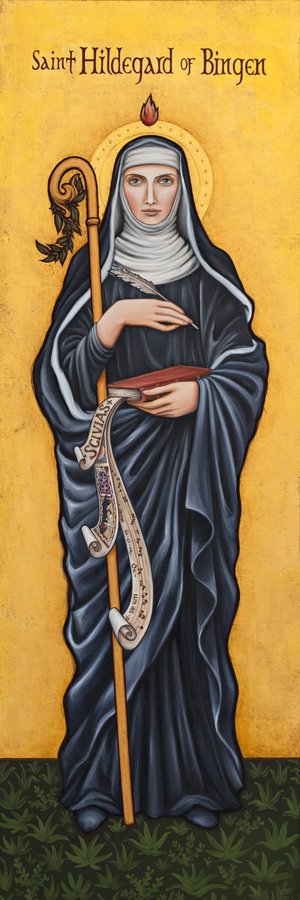
Her music will bring you to tears, her prose will make you laugh, and her visions will leave you awestruck.
Saint Hildegard stood up against corruption and fearlessly defended truth during a time when doing so could get you imprisoned or killed. Her life's story is testament to the notion that history rhymes. Today, we are inundated with propaganda from big pharmaceutical corporations who control both our educational systems and our entertainment.
Saint Hildegard teaches us that Christianity used to be a lot more interesting and connected to reality. Whether or not you like the Catholic church today, anyone can agree that 1000 years ago you would like it a lot. In short, the medieval Catholic church was more like the Harry Potter stories of today, but with God's presence acknowledged as the supreme authority, and with real mystical experiences.
Saint Hildegard von Bingen's legacy is an unending source of inspiration for my brand at Abwoon Warrior. She was not only a healer, teacher, and rebel who stood up against corrupt authorities. Saint Hildegard was a true spiritual warrior on a path to enlighten the world about holistic health, the belief that physical, mental, and spiritual aspects of life are interconnected and equally important for achieving optimal health.
I wrote this extensive article so that you too may take some inspiration on your journey as a fellow warrior of Our Father. Thank you for reading and may peace be upon your spirit.
Sancta Hildegardis, ora pro nobis.

Saint Hildegard was born in the year 1098., Böckelheim, West Franconia [Germany] and died September 17, 1179, Rupertsberg, near Bingen.
She is the Renaissance woman you've never heard but should have. She was a highly revered figure from the 12th century, was a woman of many talents and roles. During a period known as the "Dark Ages," Saint Hildegard was not only a Benedictine abbess but also a prolific writer, a gifted composer, a deep-thinking philosopher, a Christian mystic, and a polymath. Her wide range of skills and knowledge spanned across various fields, making her a truly remarkable individual of her time. Correction: Saint Hildegard is a truly remarkable individual for ALL TIME.
Not only did God speak to her directly. He gifted her with the ability to see all sorts of spiritual phenomena. Saint Hildegard also stood up against corruption in the Catholic Church and denounced many men her senior in rank, as hypocrites under the influence of Satan. Then just for fun, she taught kids how to catch unicorns and she even invented her ownlanguage consisting of 900 words and alternate alphabet. Suffice to say she was definitely homeschooled... by the Holy Spirit.
If the "Dark Ages," were truly dark, then Saint Hildegard was beacon of blinding light illuminating with Divine Light.
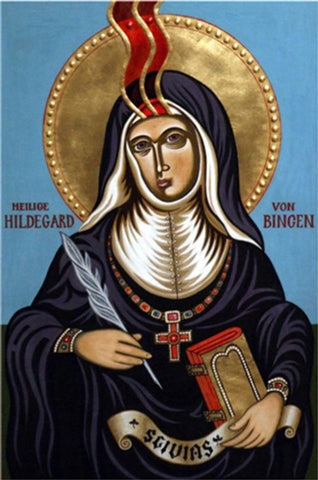
If you think the Christianity is corrupt, Saint Hildegard would agree (So would Father Amorth, the Pope's Exorcist, but that's another story).
Unfortunately, women, their voices and contributions, like those of Saint Hildegard, were often suppressed during the 12th century. So she probably was not wrong when she went to her grave denouncing her clerical superiors as being "ensnared by Satan.” It wasn't until 2012, 833 years after her death, that Saint Hildegard was recognized as a Saint.
Nevertheless, during her life Saint Hildegard von Bingen enjoyed the backing of Pope Eugene III, which was pivotal in her influence and success. This support from the highest authority in the Catholic Church not only validated her visions but also enabled her to write and speak on theological matters. This was unusual for a woman of her time. Thus, the Pope's support was instrumental in amplifying her influence and allowing her to contribute significantly to the Church and society.
"Glance at the sun. See the moon and the stars. Gaze at the beauty of earth’s greenings. Now, THINK. What delight God gives to humankind with all these things. All nature is at the disposal of humankind. We are to work with it. For without we cannot survive." ~ Saint Hildegard von Bingen
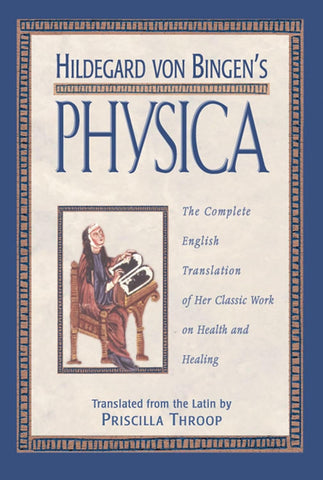 In her extensive body of work, one of the topics she delved into was the study of crystals. This was documented in her notable work, "Physica," which was a comprehensive exploration of the natural world and its potential healing properties. This work was not merely a scientific study, but it was also a spiritual journey for Hildegard, as she believed in the divine nature of the world around her.
In her extensive body of work, one of the topics she delved into was the study of crystals. This was documented in her notable work, "Physica," which was a comprehensive exploration of the natural world and its potential healing properties. This work was not merely a scientific study, but it was also a spiritual journey for Hildegard, as she believed in the divine nature of the world around her.
Her writings on crystals were not just based on her personal beliefs, but they were also a reflection of her broader philosophy that every element of the physical world has been touched by the divine. This philosophy connected spirituality with the natural sciences, a connection that was not commonly made during her time. Through her writings, Hildegard Von Bingen managed to intertwine spirituality with the natural sciences, creating a unique perspective on the world around her. This perspective, which was deeply rooted in her Christian faith, was a testament to her belief in the divine nature of all things, including crystals.
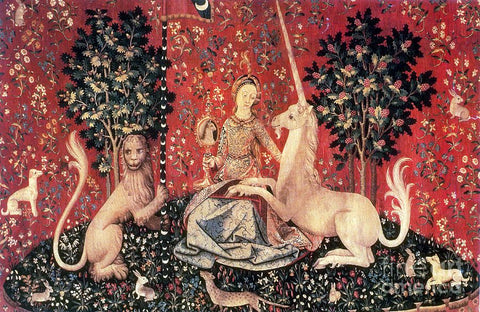
The early Catholic church did not resemble the early church of today, it was a lot cooler, and way more interesting.
For instance, in her writings, Saint Hildegard often referenced mythical creatures like unicorns and gryphons. The unicorn, symbolic of purity and grace, is often associated with Christ in Christian symbolism. The gryphon, a creature with the body of a lion and the head and wings of an eagle, represents the dual nature of Christ - divine (eagle) and human (lion). These creatures manifest in Hildegard’s visions and serve as metaphors to express complex spiritual concepts. Her work, as with many medieval texts, showcases the rich interplay between mythology and religion.
Saint Hildegard Von Bingen would often intertwine spirituality with natural sciences, as this was not uncommon at the time. Her work was a testament to an alternate perspective on faith, significantly influencing the development of Western philosophy and theology.
It's my personal belief that the church was usurped by satanic witches and sorcerers, who made sure to mute the echoes of historical figures like Saint Hildegard, accuse people like her of "witchcraft," and make the Catholic church more "scientific," and less mystical.
For reference, the first book on witchcraft, The Malleus Maleficarum wasn't written until 1486. The book was written as an expose and it seems this was also the time when the Church truly went dark. The Inquisition would then follow. Eventually, the Western world lost its ability to discern between holistic health and demon worship, known in the Bible as idolatry.
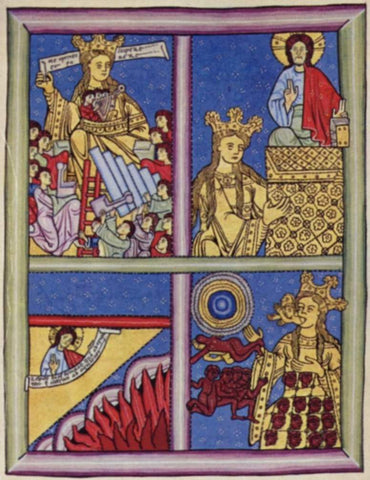
Not only was it shocking for a woman to lecture academically, it was even more shocking that Saint Hildegard lectured both men and women, in the same room... about sex.
"When a woman is making love with a man, a sense of heat in her brain, which brings forth with it sensual delight, communicates the taste of that delight during the act and summons forth the emission of the man's seed. And when the seed has fallen into its place, that vehement heat descending from her brain draws the seed to itself and holds it, and soon the woman's sexual organs contract and all parts that are ready to open up during the time of menstruation now close, in the same way as a strong man can hold something enclosed in his fist." ~ Hildegard of Bingen
Saint Hildegard Von Bingen was an early champion for women's rights. As a woman of great intellect and spiritual depth in the 12th century, she defied societal norms that suppressed women's voices. Her works, especially on the study of crystals in "Physica," reflected her belief in the divine nature of all things, a perspective uncommon in her time. Through her writings, Hildegard managed to blend spirituality with natural sciences, a testament to her unique worldview. Her profound influence in various fields, from science to theology, paved the way for women's intellectual and spiritual contributions.
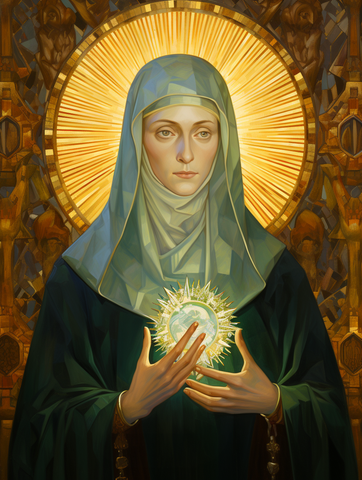
Saint Hildegard was canonized as a saint by Pope Benedict XVI on May 10, 2012. Despite her widespread veneration for centuries, her formal canonization process only began in the 20th century. In addition to her canonization, Pope Benedict XVI also recognized her as a Doctor of the Church in October 2012, making her one of the few women to hold this distinguished title in the Catholic Church. This recognition affirms her significant contributions to theology and spirituality.
Today, Saint Hildegard's influence continues to resonate in Germany and beyond. The wellness centers dedicated to her teachings are a testament to her enduring relevance in holistic health and spirituality. The practice of using crystals, which she explored in her work "Physica," is still used in these centers for therapeutic purposes. These establishments not only honor her legacy but also continue to propagate her teachings. Furthermore, the existence of an abbey dedicated to her, complete with nuns, highlights her significant contribution to the Catholic Church. The abbey serves as a living tribute to her life and work, ensuring that her spiritual and intellectual legacy continues to inspire and influence future generations.
Related Articles:
Do Crystals Really Have Healing Powers?
Saint Hildegard and Crystal Healing